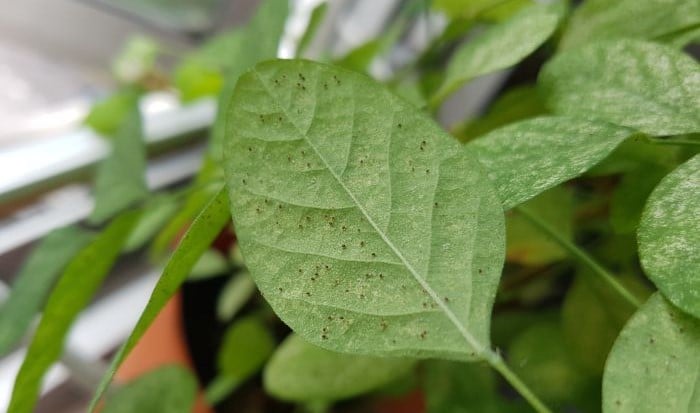Be sure to take time during winter to manage houseplant pests

JACKSONVILLE, Ill. — We don’t often think much about insect pests outside of the occasional pantry pest or accidental invader during the winter months. That doesn’t mean our plants won’t have insect problems. This is particularly true for houseplants, where insect pests often seem to arrive out of nowhere.
Common houseplant pests
Spider mites are small (1/50 inch) and oval-shaped. They have sucking mouthparts and will feed on sap from plants. Their feeding damage often causes plants to have a speckled or mottled appearance. Spider mites also produce webbing, thus their name, which can also indicate their presence.
Scale insects are unique, and at first, appearance, don’t really resemble insects. Adult females are immobile (legless) and are covered with a waxy coating that resembles a fish or reptile scale, thus the name. Mealybugs are small, soft-bodied insects. They are covered in white, powdery, waxy secretions. They will often have small projections coming out from their sides as well as “tails.”
Scale and mealybugs have piercing-sucking mouthparts that they will use like straws to suck up plant sap. Their feeding can cause yellowing leaves, as reduced growth and stunted plants. Many also will produce honeydew, which can lead to the development of sooty mold on plants. They are most commonly found on the undersides of leaves, especially along the mid-veins.
Aphids are also small, soft-bodied insects. They are pear-shaped and have relatively long legs and antennae. Like scale and mealybugs, they have piercing-sucking mouthparts that they use to feed on plant sap and will also produce honeydew. Aphid feeding can cause leaves to turn yellow, and plants can become distorted and stunted. Aphids are commonly found on new growth and the undersides of leaves.
How do I get rid of insects on my houseplants?
Like with managing pests on outdoor plants, try practicing integrated pest management with houseplants.
Washing plants with water is a good first step to managing houseplant pests. Leaves of plants can be wiped with a moist sponge or paper towel to remove insects and mites. This is also a good way to remove sooty mold from plants.
Plants also can be sprayed with water to knock pests off. Doing this several times can help manage pests like aphids, spider mites and other pests that aren’t firmly attached to plants (such as scale).
If you have a few scale insects on a plant, scrape them off with your fingernail or a piece of plastic like a credit card. Mealybugs can be removed by using tweezers or a cotton swab that has been dipped in alcohol.
If plants are severely infested with pests, it may be best to get rid of the plant and replace it. This will help prevent the pests from spreading to other plants you may have.
Pesticides are also an option when managing pests on houseplants. When selecting pesticides, they need to be labeled for use on indoor plants. Make sure to read and follow all label directions.
Miss Clipping Out Stories to Save for Later?
Click the Purchase Story button below to order a print of this story. We will print it for you on matte photo paper to keep forever.

